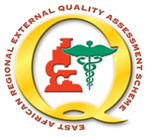Malaria Parasite and Tuberculosis Bacilli CountingMalaria Parasite Counting (Malaria Parasite Quantitation)
Counting and Grading Tuberculosis Bacilli in a Smear
|
|
MeningitisMeningitis is an inflammation of the meninges, the membranes that cover the brain and spinal cord. Meningitis is due to infection by bacteria, parasites, fungi and viruses. Bacterial and fungal infections are the most common causes of meningitis. Bacterial meningitis is a serious condition that is almost always fatal if left untreated; even with antibiotic treatment, bacterial meningitis cause serious morbidity and mortality, especially in neonates, and is a medical emergency requiring urgent diagnosis and treatment. Meningitis caused by the fungus Cryptococcus neoformans is a defining condition for acquired immune deficiency syndrome (AIDS). Although meningitis is most common in infants and children, it can occur at any age. Persons living in close quarters, such as college and boarding school students, are at higher risk of infection. |
Download PDF |
Haemoglobin EstimationHaemoglobin is the red pigment inside red blood cells that carries oxygen from the lungs to the body tissues. Normal haemoglobin values are defined as those found in healthy populations. Abnormal haemoglobin levels include those that are too high (polycythaemia) or too low (anaemia). Polycythaemia is uncommon and may be due to a response to decreased oxygen levels in blood, such as patients with chronic lung disease, congenital heart disease or heavy smokers, or in people living at high altitude (0.5 – 1.5 g/dl increase in haemoglobin for every 5000 feet above sea level). Polycythaemia may also occur in malignancies of the kidney, liver or bone marrow. |
Download PDF |
Iron Deficiency AnaemiaAnaemia occurs when the amount of red pigment (haemoglobin) in the blood falls below the normal level for the age and sex of the individual. Defined lower limits of haemoglobin levels (WHO) are:
|
Download PDF |
African TrypanosomiasisHuman African Trypanosomiasis, commonly known as Sleeping Sickness, is an infectious disease caused by protozoa of the genus Trypanosoma. There are two main morphologically identical species: Trypanosoma brucei rhodesiense and Trypanosoma brucei gambiense. Trypanosomes are transmitted to humans by bites of tsetse flies (Glossina genus) that have acquired the parasite from infected humans or animals. Trypanosomes have a complex life cycle, with part of their development in the digestive tract of tsetse flies. Both sexes of tsetse fly feed on blood. |
Download PDF |


